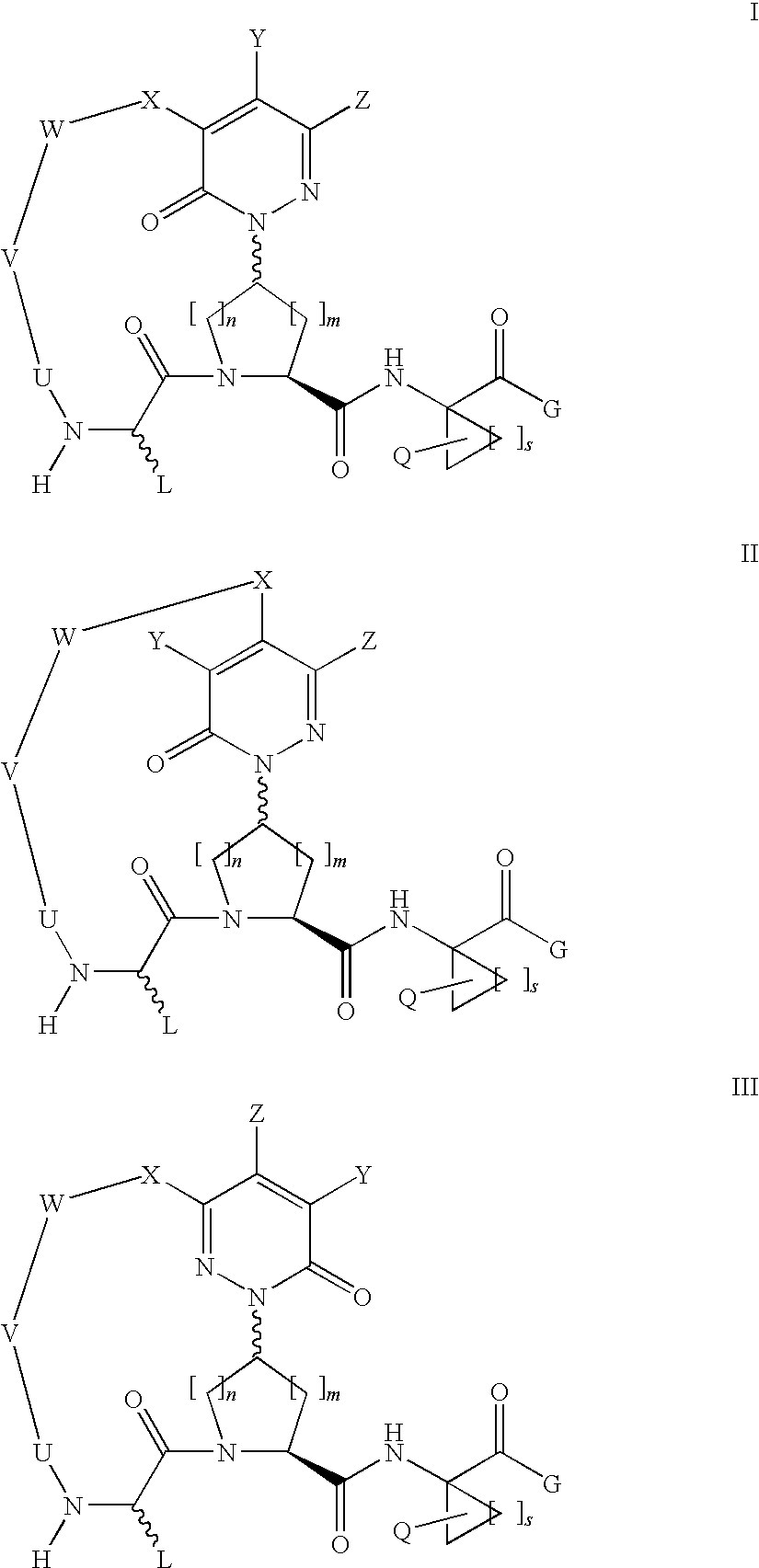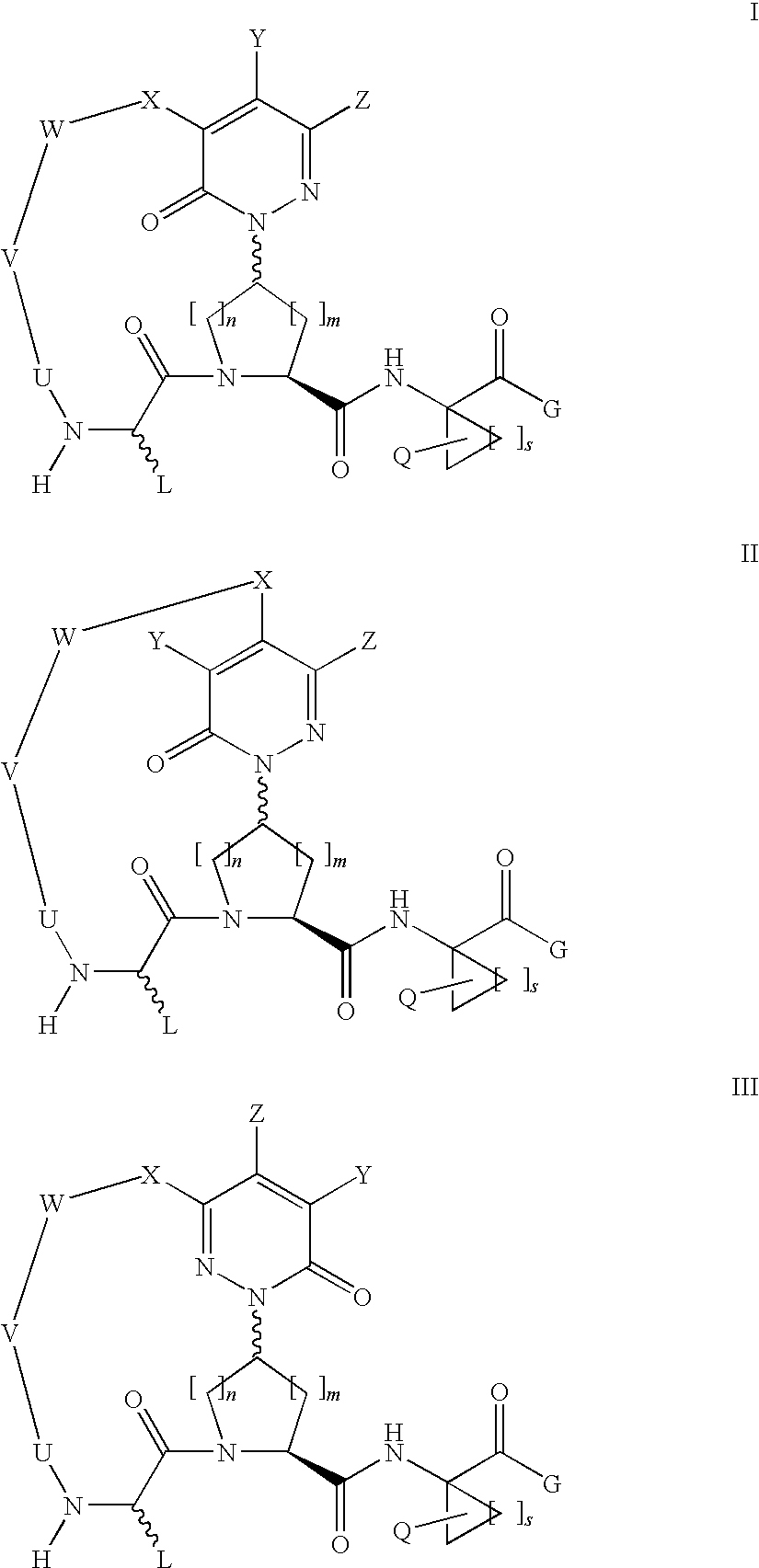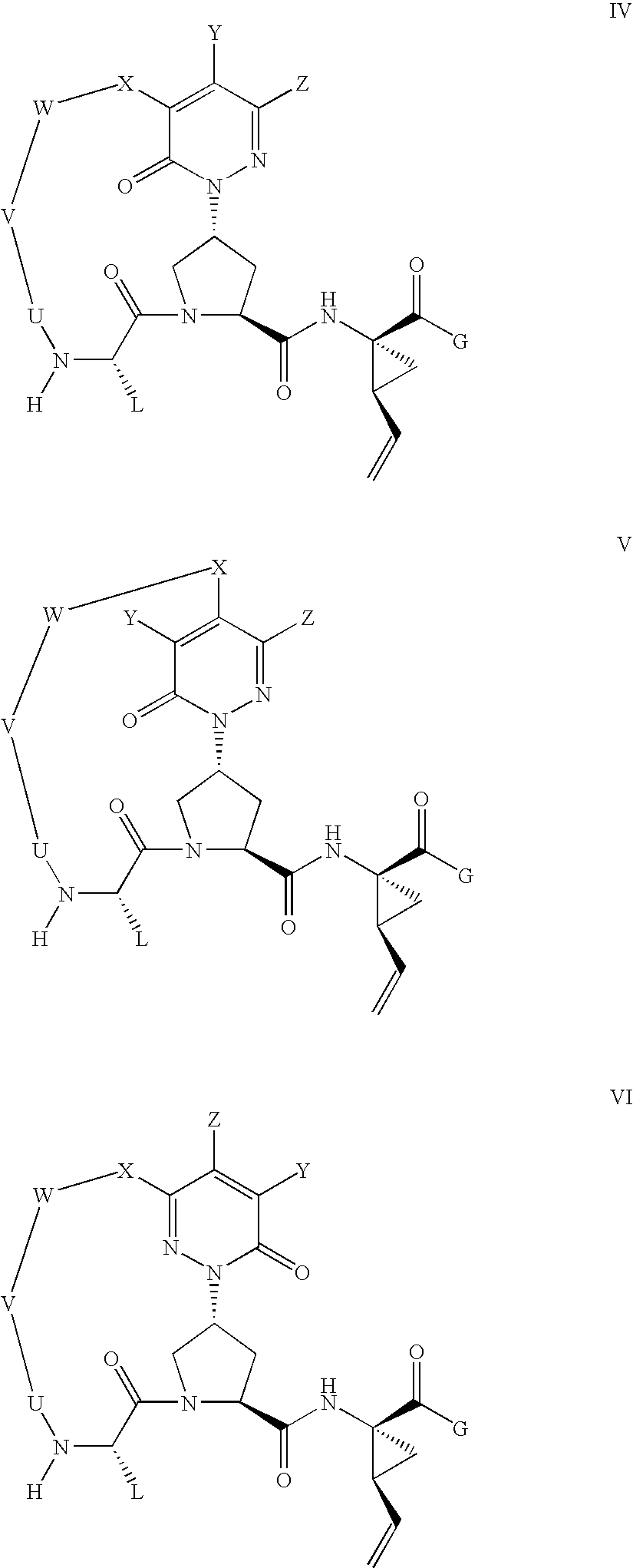Macrocyclic, pyridazinone-containing hepatitis c serine protease inhibitors
a hepatitis c serine protease inhibitor and pyridazinone technology, applied in the direction of peptides, drug compositions, peptides/protein ingredients, etc., can solve the problems of interferon-related side effects, inability to reproduce infectious culture systems and small-animal models for hcv, and increasing public health problems
- Summary
- Abstract
- Description
- Claims
- Application Information
AI Technical Summary
Benefits of technology
Problems solved by technology
Method used
Image
Examples
example 1
Compound of Formula Vii, Wherein
[0249]
Step 1E. Michael-Addition of homo-allylic alcohol: Bis-bromide if (100 mg, 0.14 mmol) was dissolved in 3 mL DMF and was charged consecutively with homo-allylic alcohol (0.024 mL, 0.24 mmol) and CsCO3 (0.137 g, 0.42 mmol). The resulting reaction mixture was stirred overnight at rt. Once complete by MS analysis, the reaction was diluted with 50 mL EtOAc and washed with NaHCO3 (2×50 mL) and brine (1×50 mL). The organic portion was then dried, filtered, and concentrated in vacuo. The crude residue was then purified via flash chromatography (SiO2) using gradiant elution (10%-25%-75% EtOAc in hexanes) to yield the desired compound 1g.
[0250]MS (ESI) m / z=708.2, 710.2 (M+H)+.
Steps 1F-1I.
[0251]Deprotection and Bis-Olefin Formation: Compound 1g (55 mg) was directly subjected to a 4M solution of HCl in dioxane (˜25 equiv) and stirred until reaction was complete by MS analysis. At this time, the reaction mixture was concentrated and the crude oil was taken u...
example 121
NS3 / NS4a Protease Enzyme Assay
[0259]HCV protease activity and inhibition is assayed using an internally quenched fluorogenic substrate. A DABCYL and an EDANS group are attached to opposite ends of a short peptide. Quenching of the EDANS fluorescence by the DABCYL group is relieved upon proteolytic cleavage. Fluorescence is measured with a Molecular Devices Fluoromax (or equivalent) using an excitation wavelength of 355 nm and an emission wavelength of 485 nm.
[0260]The assay is run in Corning white half-area 96-well plates (VWR 29444-312 [Corning 3693]) with full-length NS3 HCV protease 1b tethered with NS4A cofactor (final enzyme concentration 1 to 15 nM). The assay buffer is complemented with 10 μM NS4A cofactor Pep 4A (Anaspec 25336 or in-house, MW 1424.8). RET SI (Ac-Asp-Glu-Asp(EDANS)-Glu-Glu-Abu-[COO]Ala-Ser-Lys-(DABCYL)-NH2, AnaSpec 22991, MW 1548.6) is used as the fluorogenic peptide substrate. The assay buffer contains 50 mM Hepes at pH 7.5, 30 mM NaCl and 10 mM BME. The enz...
example 122
[0263]Quantification of HCV replicon RNA (HCV Cell Based Assay) is accomplished using the Huh 11-7 cell line (Lohmann, et al Science 285:110-113, 1999). Cells are seeded at 4×103 cells / well in 96 well plates and fed media containing DMEM (high glucose), 10% fetal calf serum, penicillin-streptomycin and non-essential amino acids. Cells are incubated in a 7.5% CO2 incubator at 37° C. At the end of the incubation period, total RNA is extracted and purified from cells using Ambion RNAqueous 96 Kit (Catalog No. AM1812). To amplify the HCV RNA so that sufficient material can be detected by an HCV specific probe (below), primers specific for HCV (below) mediate both the reverse transcription of the HCV RNA and the amplification of the cDNA by polymerase chain reaction (PCR) using the TaqMan One-Step RT-PCR Master Mix Kit (Applied Biosystems catalog no. 4309169). The nucleotide sequences of the RT-PCR primers, which are located in the NS5B region of the HCV genome, ...
PUM
| Property | Measurement | Unit |
|---|---|---|
| temperature | aaaaa | aaaaa |
| pH | aaaaa | aaaaa |
| emission wavelength | aaaaa | aaaaa |
Abstract
Description
Claims
Application Information
 Login to View More
Login to View More - R&D
- Intellectual Property
- Life Sciences
- Materials
- Tech Scout
- Unparalleled Data Quality
- Higher Quality Content
- 60% Fewer Hallucinations
Browse by: Latest US Patents, China's latest patents, Technical Efficacy Thesaurus, Application Domain, Technology Topic, Popular Technical Reports.
© 2025 PatSnap. All rights reserved.Legal|Privacy policy|Modern Slavery Act Transparency Statement|Sitemap|About US| Contact US: help@patsnap.com



